Visit to download the full and correct content document: https://ebookmass.com/product/breed-predispositions-to-dental-and-oral-disease-in-d ogs-1st-edition-brook-niemiec/

More products digital (pdf, epub, mobi) instant download maybe you interests ...
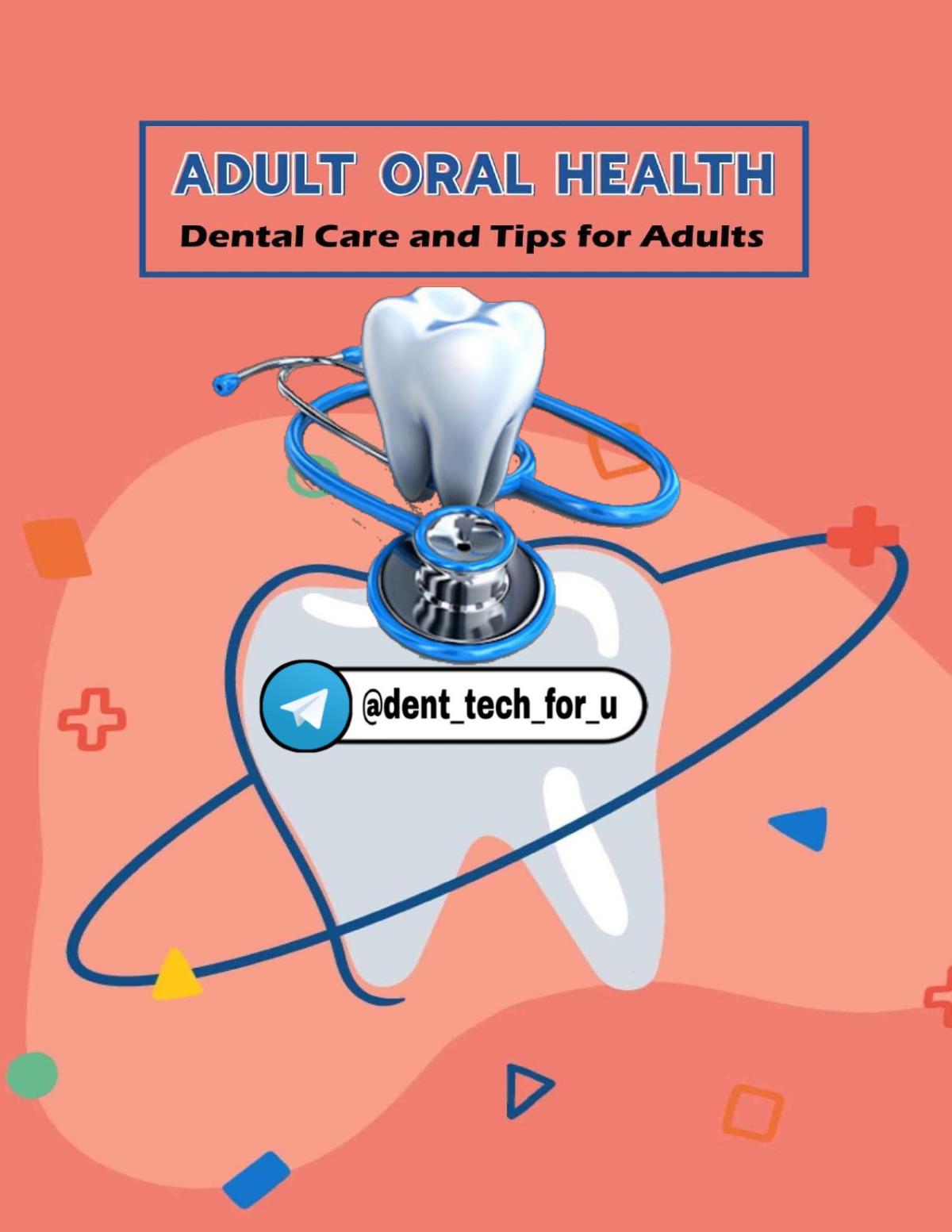
Adult Oral Health : Dental Care and Tips for Adults : Dental Care John Baggett
https://ebookmass.com/product/adult-oral-health-dental-care-andtips-for-adults-dental-care-john-baggett/
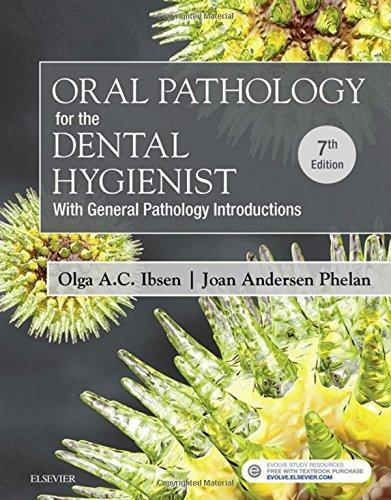
Oral Pathology for the Dental Hygienist 7th Edition
https://ebookmass.com/product/oral-pathology-for-the-dentalhygienist-7th-edition/

Oral Pharmacology for the Dental Hygienist (2nd Edition ) 2nd Edition
https://ebookmass.com/product/oral-pharmacology-for-the-dentalhygienist-2nd-edition-2nd-edition/

Dental Care and Oral Health Sourcebook: Health Reference Series Angela L. Williams
https://ebookmass.com/product/dental-care-and-oral-healthsourcebook-health-reference-series-angela-l-williams/

Oral Pathology for the Dental Hygienist E Book 7th Edition, (Ebook PDF)
https://ebookmass.com/product/oral-pathology-for-the-dentalhygienist-e-book-7th-edition-ebook-pdf/

How to Develop Your Career in Dental Nursing 1st
Edition Janine Brooks
https://ebookmass.com/product/how-to-develop-your-career-indental-nursing-1st-edition-janine-brooks/

Creating
Culture
Ananda Breed
in (Post) Socialist Central Asia
https://ebookmass.com/product/creating-culture-in-post-socialistcentral-asia-ananda-breed/

Like Cats and Dogs Kate Mcmurray
https://ebookmass.com/product/like-cats-and-dogs-kate-mcmurray-3/

Advances in Oral and Maxillofacial Surgery 1st Edition
Jose M Marchena
https://ebookmass.com/product/advances-in-oral-and-maxillofacialsurgery-1st-edition-jose-m-marchena/

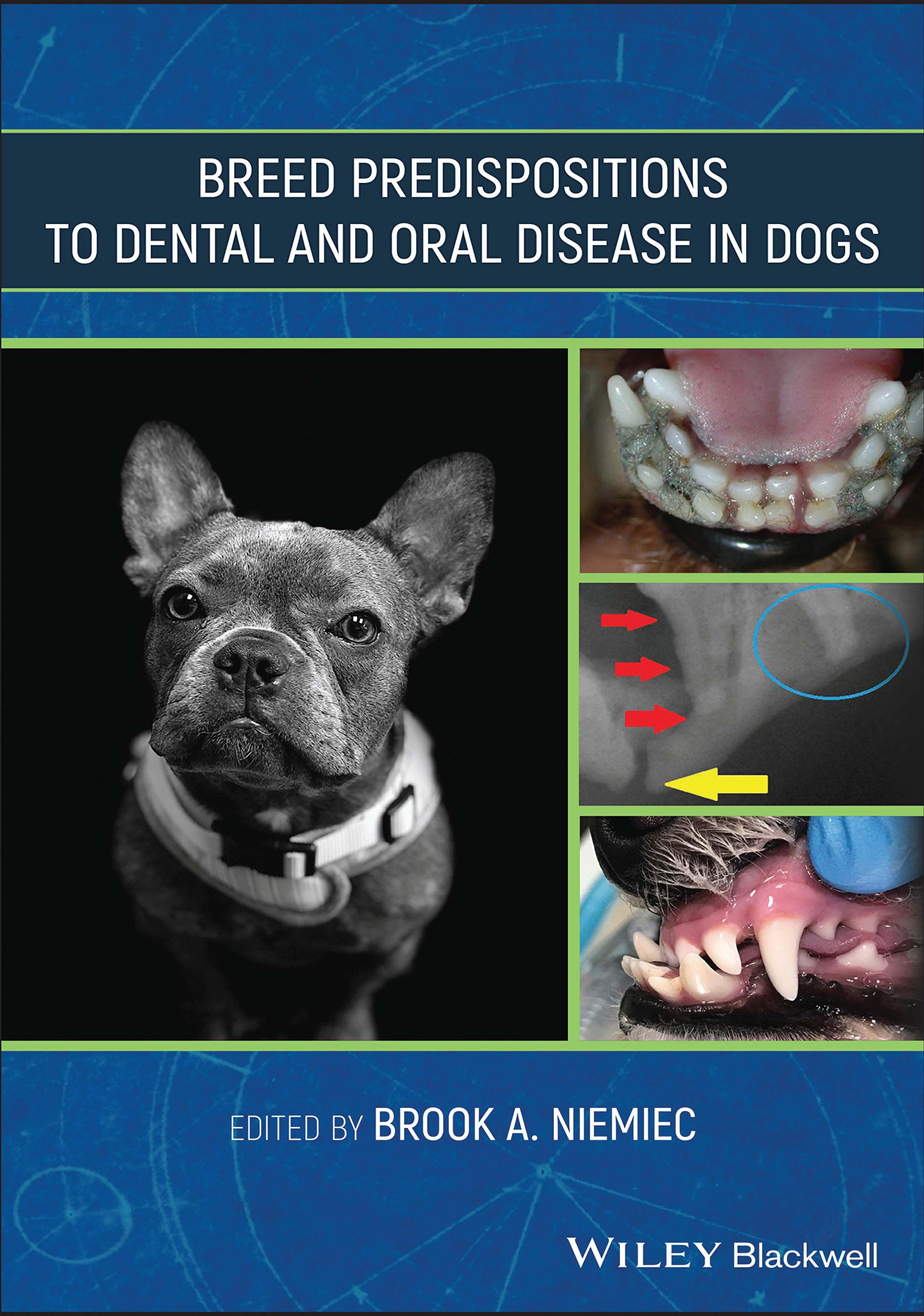
BreedPredispositionstoDentalandOralDiseaseinDogs
BreedPredispositionstoDentalandOralDiseasein
Dogs
Editedby
BrookA.Niemiec,DVM,DAVDC,DEVDC,FAVD
VeterinaryDentalSpecialtiesandOralSurgery
SanDiego,CA,USA
Thiseditionfirstpublished2021 ©2021JohnWileyandSons,Inc.
Allrightsreserved.Nopartofthispublicationmaybereproduced,storedinaretrievalsystem,ortransmitted,inany formorbyanymeans,electronic,mechanical,photocopying,recordingorotherwise,exceptaspermittedbylaw. Adviceonhowtoobtainpermissiontoreusematerialfromthistitleisavailableathttp://www.wiley.com/go/ permissions.
TherightofBrookA.Niemiectobeidentifiedastheauthoroftheeditorialmaterialinthisworkhasbeenasserted inaccordancewithlaw.
RegisteredOffice
JohnWiley&Sons,Inc.,111RiverStreet,Hoboken,NJ07030,USA
EditorialOffice 111RiverStreet,Hoboken,NJ07030,USA
Fordetailsofourglobaleditorialoffices,customerservices,andmoreinformationaboutWileyproductsvisitusat www.wiley.com.
Wileyalsopublishesitsbooksinavarietyofelectronicformatsandbyprint-on-demand.Somecontentthatappears instandardprintversionsofthisbookmaynotbeavailableinotherformats.
LimitofLiability/DisclaimerofWarranty
Thecontentsofthisworkareintendedtofurthergeneralscientificresearch,understanding,anddiscussiononly andarenotintendedandshouldnotberelieduponasrecommendingorpromotingscientificmethod,diagnosis,or treatmentbyphysiciansforanyparticularpatient.Inviewofongoingresearch,equipmentmodifications,changes ingovernmentalregulations,andtheconstantflowofinformationrelatingtotheuseofmedicines,equipment,and devices,thereaderisurgedtoreviewandevaluatetheinformationprovidedinthepackageinsertorinstructionsfor eachmedicine,equipment,ordevicefor,amongotherthings,anychangesintheinstructionsorindicationofusage andforaddedwarningsandprecautions.Whilethepublisherandauthorshaveusedtheirbesteffortsinpreparing thiswork,theymakenorepresentationsorwarrantieswithrespecttotheaccuracyorcompletenessofthecontents ofthisworkandspecificallydisclaimallwarranties,includingwithoutlimitationanyimpliedwarrantiesof merchantabilityorfitnessforaparticularpurpose.Nowarrantymaybecreatedorextendedbysalesrepresentatives, writtensalesmaterialsorpromotionalstatementsforthiswork.Thefactthatanorganization,website,orproductis referredtointhisworkasacitationand/orpotentialsourceoffurtherinformationdoesnotmeanthatthepublisher andauthorsendorsetheinformationorservicestheorganization,website,orproductmayprovideor recommendationsitmaymake.Thisworkissoldwiththeunderstandingthatthepublisherisnotengagedin renderingprofessionalservices.Theadviceandstrategiescontainedhereinmaynotbesuitableforyoursituation. Youshouldconsultwithaspecialistwhereappropriate.Further,readersshouldbeawarethatwebsiteslistedinthis workmayhavechangedordisappearedbetweenwhenthisworkwaswrittenandwhenitisread.Neitherthe publishernorauthorsshallbeliableforanylossofprofitoranyothercommercialdamages,includingbutnot limitedtospecial,incidental,consequential,orotherdamages.
LibraryofCongressCataloging-in-PublicationData
Names:Niemiec,BrookA.,editor.

Title:Breedpredispositionstodentalandoraldiseaseindogs/editedby BrookNiemiec.
Description:Hoboken,NJ:Wiley-Blackwell,2021.|Includesindex.
Identifiers:LCCN2020024174(print)|LCCN2020024175(ebook)|ISBN 9781119552116(hardback)|ISBN9781119552123(adobepdf)|ISBN 9781119552048(epub)
Subjects:MESH:ToothDiseases–veterinary|Anesthesia,Dental–veterinary |VeterinaryMedicine|Dogs
Classification:LCCSF867(print)|LCCSF867(ebook)|NLMSF867|DDC 636.089/763–dc23
LCrecordavailableathttps://lccn.loc.gov/2020024174
LCebookrecordavailableathttps://lccn.loc.gov/2020024175
CoverDesign:Wiley
CoverImages:Frenchbulldog–RobertFurman,Dogdentistryimages–BrookA.Niemiec,Blueprintbackground ©belterz/GettyImages
Setin9.5/12.5ptSTIXTwoTextbySPiGlobal,Chennai,India 10987654321
Contents
Contributors ix
Introduction xi
1ConditionsCommoninSmallandToyBreedDogs 1 BrookA.Niemiec
1.1PeriodontalDisease 1
1.2PersistentDeciduous(PD)Teeth 23
References 30
2ConditionsSeeninBothSmallandBrachycephalicBreeds;ThereforeSmall BrachycephalicBreeds(Pug,LhasaApso,ShihTzu,etc.)AreEvenMore SignificantlyAffected 39 BrookA.Niemiec
2.1CrowdingandRotation 39
2.2CongenitallyMissingTeeth 41

2.3ImpactedorEmbeddedTeeth 44
References 50
3TheWelfareConcernsofHeritableDentalDiseases 53 KymberleyC.McLeod
3.1Introduction 53
3.2WhatIsAnimalWelfare? 53
3.3SequelaetoPeriodontalDisease 56
3.4GingivalHyperplasia 57
3.5AssociationswithPainandSuffering 57
3.6PhysiologicalSignsofStress 58
3.7WelfareImplicationsofAnesthesiaFreeDentistry(AFD) 62
3.8Conclusions 63
References 63
4ConditionsCommonlySeeninBrachycephalicBreeds 71 BrookA.Niemiec
4.1ClassIIIMalocclusions 71 References 75
5BrachycephalicAirwayDisease 77
SeanW.Aiken
5.1HistoryandClinicalSigns 78
5.2PhysicalExamination 78
5.3Pharyngeal/LaryngealExamination 79
5.4DiagnosticImaging 81
5.5DiagnosticTesting 83
5.6MeasuringAirflowResistance 83
5.7SurgicalTreatment 84
5.8StenoticNares 84
5.9ElongatedSoftPalate 86
5.10EvertedLaryngealSaccules 88
5.11AdditionalConditions 89 References 92
6TheUniqueWelfareChallengesofBrachycephalism 95 KymberleyC.McLeod
6.1OralInfection 95
6.2OralPain 96
6.3Emotional/PhysicalDistress 97
6.4OtherHealthandBehavior-RelatedConcerns 97
6.5Normalization 98 EffectsonQualityofLife(QOL) 98 References 99

7OtherHeritableConditions 101 BrookA.Niemiec
7.1MandibularCanineLinguoversion(BaseNarrowCanines) 101
7.2GingivalEnlargement 113
7.3ChronicUlcerativeParadentalStomatitis 115
7.4TightLipSyndrome 120
7.5CraniomandibularOsteopathy 121
7.6HistologicallyLow-Grade,BiologicallyHigh-Grade,Fibrosarcoma 123 References 125
8AnestheticManagementofToyandSmallBreedDogs 131 AmberHopkins
8.1Introduction 131
8.2BodySize 131
8.3CongenitalPredispositions 135
8.4AnestheticandProceduralChallenges 137
8.5Conclusion 139 References 139
9BrachycephalicBreedsandAnesthesia 143
AmberHopkins
9.1Introduction 143
9.2BrachycephalicAirwaySyndrome(BAS)Pathophysiology 143
9.3OtherPre-existingConditionsintheBrachycephalicPatient 145
9.4Pre-anestheticConsiderations 146
9.5AnestheticManagement 150
9.6AnestheticRecovery 152
9.7Conclusion 153
References 153
10PeriodontalTherapyinSmallandToyBreedDogs 157
BrookA.Niemiec
10.1Homecare 157
10.2ProfessionalCare 161
References 173
11TheUniqueChallengesofExtractionsinSmallandToyBreedDogs 179
BrookA.Niemiec
References 184
Conclusions 187 Index 189
Contributors
SeanW.Aiken,DVM,MS,DACVS VeterinarySpecialtyHospital SanDiego,CA
USA
AmberHopkins,DVM,cVMA,CCRT, DACVAA
VCAAlamedaEastVeterinaryHospital Denver,CO
USA
KymberleyC.McLeod,DVM ConundrumConsulting Toronto,Ontario, Canada
BrookA.Niemiec,DVM,DAVDC,DEVDC, FAVD
VeterinaryDentalSpecialtiesandOralSurgery SanDiego,CA USA
Introduction
Throughoutthehistoryofveterinarymedicine,whenanewspeciesorbreedbecomesacommon focusoftherapy,thetendencyhasbeentotreatitsimilarlytohistoricallyestablishedmethods. Thesemethodsserveasabasicguidefortherapy,buteventuallytheyarefoundtobelackingand theprofessionisrequiredtochangeitsmindset.Thus,theoldadages“Dogsarenotsmallhorses,” andthen“Catsarenotsmalldogs.”
Veterinaryeducationtypicallyevolvesrelativelyslowlycomparedtothechangeinpractice demands.Therefore,educationmaybebasedonclassicmodelsasopposedtowhatiscurrently presentwithindailypractice.
Withtheincreasingpopularityof“designer”dogs,aswellaslinebreedingfordesiredtraits,we havecreatedhereditableissueswithinspeciesandbreeds.Thisisperhapsbestknownanddiscussedinbrachycephalicbreeds,butisseenthroughoutthecaninespectrum.
Onetrendthathasbeenpresentfordecadesbutisincreasingevenmorerapidlytodayisthedesire forsmallerandsmallerdogs.These“microdogs”aresignificantlydifferentintheirskeletalaswell asbehavioralaspects.Perhapsthereisnowherethismoreapparentthanwithintheoralcavity.
Despitesignificantdifferencesintheincidenceandseverityofperiodontaldisease,westill treatsmallbreeddogsliketheirlargercousins.Thisbookwilldescribethesignificantdifferencesbetweenlargeandsmallbreedpatientsinregardstoonset,prevalence,andsignificant local/regionalandsystemicconsequencesofperiodontaldisease.Thisnecessitatesacompletely differentapproachtoperiodontaltherapyaswellasareevaluationastodecisionsonwhenand howtoextractteeth.Wewillalsocovertheotherbreedswhoarepronetoparticulardentalissues andhowtomitigatethem.Inaddition,wewillbrieflycovertheuniqueconcernsofbrachycephalic breeds.Thechallengesofextractionsinsmallandtoybreeddogsispresentedtohelpavoid iatrogeniccomplications.Chaptersontheanimalwelfareaspectsofheritableoralanddental diseasesareincludedtoprovideaanimalcentric,wholepatientapproachtodentalcare.Finally, thisbookwilldebunkthecommonmythsofanestheticrisksinbrachycephalicandespecially smallbreeddogs.
ConditionsCommoninSmallandToyBreedDogs
BrookA.Niemiec
VeterinaryDentalSpecialtiesandOralSurgery,SanDiego,CA,USA
1.1PeriodontalDisease
1.1.1PeriodontalDiseasePathogenesisandPrevalence
Periodontaldiseaseisthemostcommonmedicalconditioninsmallanimalveterinarypatients [1,2].Theclassicstudyfromthe1980sreportedthatbyjusttwoyearsofage,80%ofdogsand 70%ofcatshavesomeformofperiodontaldisease[3].However,morecurrentstudiesreportthat periodontaldiseaseisactuallyevenmorecommon,beingdiagnosedin90%ofpatientsbyjustone yearofage[4].Infact,twostudies(oneusingasensitivediagnostictestandtheotherincluding examundergeneralanesthesia)revealedthatALLpatientsinthestudywereinfected[5,6].The lackofrecognitionofthehighprevalenceofperiodontaldiseasehasasmuchtodowithalackof understandingoftheinitialsignsofdiseaseasitdoeswiththelackofeffectivediagnosticmethods. Partoftheissuewithdiagnosingtheearlystagesofgumdiseaseisthatitrequiresanesthesia(or atleastheavysedation).Thisisbecauseprobingisrequired(seebelow)aswellasthefactthatthe earliestsignsofdiseasearetypicallyonthepalatal/lingualaspectoftheteeth[6].

Theearlieronsetofperiodontaldiseaseisdueprimarilytothepopularityofsmallandtoybreed dogs,whoareparticularlysusceptible[7–11].Thecompletereasoningbehindthisisunknown; howeverdecreasedinterdentalspace(crowding)(Figure1.1)[12],rotationofteeth(Figure1.2), decreasedoralactivity(recreationalchewing),increasedlifespan[13,14],andshortertoothroots (Figure1.3)alllikelyplayarole[15,16].
Thereareseveraladditionalreasonsforthe“apparent”increaseinincidence.First,thewidely knownstudiesfromthe1980swerebasedonerythemaofthegingivabeingthefirstsignofgumdisease(Figure1.4).Thisinflammationistermed“marginalgingivitis”[17,18],andiscreatedbythe proliferationofcapillariesandformationof“capillaryloops”[19].Whilecolorchangeisadependablesignofthepresenceofgingivitis,ithasbeenestablishedthatgingivalbleedingonperiodontal probingorbrushingactuallyoccursBEFOREanycolorchange[17,20](Figure1.5).Therefore, withnewdiagnostictestssuchasaperiodontaldiagnosticstrip1 ,wearefindingevenmorepatients affectedwithperiodontaldisease.Anotherreasonisthesteadilyincreasinglifeexpectancyinour patients[21,22].Smallbreeddogsareknowntolivelongerthanlargebreeds[13,14].Thislongevity
1Orastrip,PDXbiotech
BreedPredispositionstoDentalandOralDiseaseinDogs, FirstEdition.EditedbyBrookA.Niemiec. ©2021JohnWiley&Sons,Inc.Published2021byJohnWiley&Sons,Inc.


Figure1.1 Crowding.Thesmallermouthswithrelativelylargerteethseeninsmallandtoybreeddogs oftenresultsincrowding.Crowdinghastensperiodontaldiseasebyinterferingwiththepatient’snatural cleaningabilityaswellasthelossofthenormalgingivalcollar.Thisisdemonstratedintheincisorregion ofaChihuahua(a)andthemandibularpremolarregionofapug(b).Notetheperiodontallossontheleft sideofthepatientin(a)asopposedtothemorenormalrightside.


Figure1.2 Rotatedteeth.Arotated maxillaryleftthirdpremolar(207)ofa FrenchBulldog.Notethelackofspacing betweentheteethaswellaslossofthe gingivalcollaronboththemesialanddistal aspectsofthistooth.
providesperiodontaldiseasemoretimetonegativelyaffectthepatient,asitiswellknownthat periodontaldiseasebecomesmorecommonwithincreasingage[9,23].
Themainfactorfortheincreasedsusceptibilityincertainbreedsmayalsobehereditaryinnature. ArecentstudyonLabradorRetrieversrevealedthatinonelitterofeightdogsonly12.5%developed periodontitis,whereasinanotherlitteroffivedogs,100%developedperiodontitis[6].Reports onSchnauzersandYorkshireTerriersconfirmedtheirpropensitytothisdiseaseprocessaswell [11,24,25].Thereareotherwellknown“atrisk”breedsbesidessmallandtoybreeds(e.g. GreyhoundsandCavalierKingCharlesSpaniels)[26].Further,thereismountingresearchonthe humansidethatthereisageneticpredispositiontoperiodontaldisease.Studiesontwinsshowed asignificantincreaseinperiodontaldisease,attachmentloss,andplaqueaccumulation[27,28]. Early-onsetperiodontaldiseaseistentimesmorelikelytooccurinAfrican-Americanswhen



Figure1.3 Rootlengthissignificantlyreducedinsmallbreeddogs.(a)Anintraoraldentalradiographof themandibularcaninesofa0.9kgChihuahua.Therootlengthasmeasuredfromthecemento-enamel junction(CEJ)totheapexoftherootis8.45mm.Notethatthereisalsosignificantalveolarboneloss.(b)An intraoraldentalradiographofthemandibularcaninesofa35kgLabradorRetriever.Therootlengthas measuredfromthecemento-enameljunction(CEJ)totheapexoftherootis27.69mm.Thismeansthatthe rootsofthecaninesaremorethanthreetimesthelengthofthesameteethinasmallbreeddog,thus providingsignificantlymoreattachmentthatneedstobelostpriortoextractionbeingrequiredandthus thepethasmoreresistancetotoothloss.
Figure1.4 Gingivitis.Themilderythema andedemaofthegingiva(marginal gingivitis)onthisrightmaxillaryfourth premolar(108)isasuresignofgingival inflammation,andwasmistakenlybelieved tobethefirstsignofdisease.However,itis nowknownthatthisisalatersign,as bleedingonprobingoccursbeforeacolor change(seeFigure1.5).
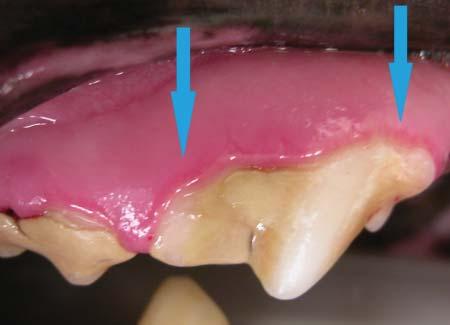



Figure1.5 Gingivitis.Thispatientdoesnot haveanyerythemaoredemaofthegingiva ofthisrightmandibularcanine(404). However,bleedingisprovokedwithgentle probingduetothefactthatthegingivais mildlyinflamed.Thisisthetruefirstsignof gingivitis,whichoftencannotbediagnosed withoutgeneralanesthesia.Thus,gingivitis isseverelyunderdiagnosed,whichiswhy mostveterinarydentistsrecommendannual cleaningsregardlessofconsciousoralexam findings.
Figure1.6 Normalgingiva.Thisisa pictureofthemandibularleftofadogin goodperiodontalhealth.Thetissuesare coralpinkincolorandtheteethareclean.
comparedtoCaucasianpatients[29].Finally,severalstudieshaveidentifiedspecificgenesand genomesthatapparentlypredisposetheindividualtoperiodontaldisease[30–32].Localizationof theexactgeneswhichareresponsibleforspecificconditionsindogsmaybepossibleinthenear futureasacaninegenomemapiscurrentlyavailable[33].
1.1.2ClinicalSignsofPeriodontalDisease
Normalgingivaltissuesarecoralpinkincolor(allowingfornormalpigmentation),andpossessa smooth/regulartexture(Figure1.6).Thereshouldbenovisibleplaqueorcalculusonthedentition.
Thefirst clinical signofgingivitisisrednessofthegums(seeFigure1.4),followedbyedema, (Figure1.7)andhalitosis[18,19].However,gingivalbleedingduringbrushingorchewingisusually notedpriortoacolorchange,butthisishardtoimpossibletoevaluateinaconsciouspatient[16, 19,34](seeFigure1.5).Infact,recentstudieshaveproventhatgeneralanesthesiaisrequiredto diagnoseperiodontaldisease,especiallytheearliestsigns[6].
Gingivitisistypicallyassociatedwithcalculus,butitiscausedbyplaqueandthereforemayoccur despitetheabsenceofcalculus(Figure1.8).Alternatively,significantsupragingivalcalculusmay existwithlittletonogingivitis(Figure1.9).Itiscriticaltounderstandthatcalculusinandofitself isessentiallynon-pathogenic[3,35,36].Therefore,thedegreeofgingivalinflammationshouldbe usedtojudgetheneedforprofessionaltherapy,notthelevelofcalculus.However,ashasbeenpreviouslynoted,periodontaldisease(especiallytheearlystages)CANNOTbeeffectivelydiagnosed withoutgeneralanesthesia[6,9].
Figure1.7 Gingivitis:Intraoraldental pictureofthemaxillaryleftofacanine patientwithsignificantgingival inflammation.

Figure1.8 Intraoraldentalpictureofthe maxillaryrightofadogwithadvanced gingivitis(bluearrows)despitethefactthat theteetharefairlyclean.Thus,alackof calculusdoesnotsignifythatthereisno infectionandthepatientdoesnotrequire professionalintervention.Thispatientisin direneedofacleaning.


Figure1.9 Intraoraldentalpictureofthe maxillaryrightofadogwithsignificant calculusandminimalgingivalinflammation. Whilethispatientdoesrequireacleaning, thereismuchlessinfection/inflammationin thiscase,eventhoughthereissignificant dentalcalculuspresent.



Figure1.10 Significantattachmentlosscanbepresentinpatientswithcleanteethandnoobvious gingivalinflammation.(a)Intraoraldentalpictureofthemandibularleftmolars(309,310)ofadogwhich arecleananddemonstrateminimalgingivalinflammation.However,periodontalprobingrevealsa12-mm pocket.Bothoftheseteethrequireextractiondespiteappearingclean.(b)Intraoraldentalpictureofthe rightmaxillarycanine(104)ofadogwhichhasminimaldentaldepositsandnoevidenceofgingivitis. However,periodontalprobingrevealsa9-mmpocket.Thistoothrequiresadvancedtherapytocompletely resolvetheinfection.Ideallythisconsistsofperiodontalflapsurgeryandguidedtissueregeneration, howeverextractionisanacceptablealternative.


Figure1.11 Gingivalrecession:Intraoral dentalpictureofaYorkshireTerrierwith significantgingivalrecessiononthe mandibularincisors.Thismaybediagnosed onconsciousoralexam.
Asgingivitisprogressestoperiodontitis(thedeeperinflammationoftheperiodontiumresulting inboneloss),theoralinflammatorychangestypicallyintensify(however,advancedperiodontallosscanbepresentdespitenormalappearinggingiva)(Figure1.10).Thehallmarkfeatureof establishedperiodontitisisattachmentloss.Therearetwocommonpresentationsofattachment loss:gingival(gum)recession(Figure1.11)andperiodontalpocketformation(Figure1.12).When recessionoccurs,therootsbecomeexposedandmaybeidentifiedonconsciousexam However, periodontalpocketsrequiregeneralanesthesiafordiagnosis.
1.1.3OnsetofPeriodontalDiseaseinSmallandToyBreedDogs
Periodontaldiseaseistypicallythoughtofasamiddleagetoolderdogproblem.Thisisduetothe factthatinmostmediumandlargebreeddogs(CavalierKingCharlesSpanielsandGreyhounds
Figure1.12 Periodontalpockets:Intraoral dentalpictureoftheleftmaxillarythird incisor(203)inaminiaturePoodlewitha deep(7-mm)periodontalpocketonthe buccalaspect.Pocketsvirtuallyalways requiregeneralanesthesiaforaccurate diagnosis.
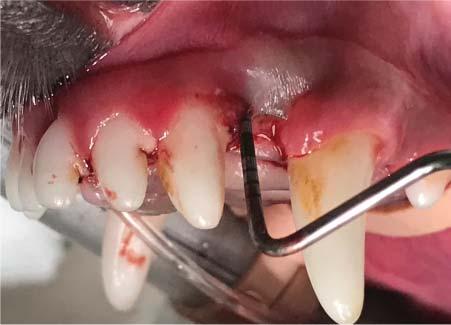



Figure1.13 Earlyperiodontallossina3-poundpoodle.(a)Intraoraldentalpictureoftheleftmolars (209–10)ina14-month-oldminiaturepoodle.Thereisa4-mmpocketpresentbetweentheteeth,whichin mostcaseswouldnotbesignificant.However,theveryshortrootsmakethisamountofattachmentloss enoughtocreatesignificantmobilityandnecessitateextractionofthesecondmolar(210).(b)Intraoral dentalradiographoftheareademonstratedin(a).Thereissignificantalveolarboneloss(redarrows) betweenthefirstandsecondmolars.
beingmarkedexceptions(seebelow)),periodontaldiseasedoesnotgenerallybecomesignificant untilthistime.Therefore,startingprofessionaltherapyatfourtofiveyearsofagehaslongbeen anacceptedpracticeinsmallanimalhospitals.However,smalldogstypicallybegintheprocess ofperiodontalbonelossveryearlyinlife[4,5].Ithasbeenreportedthatmanydogslessthan 10poundshavedemonstrablebonelossatjustoneyearofage[5].This,incombinationwiththe decreasedrootlengthinsmallerdogs,createstheneedforadvancedperiodontaltherapy(including extractions)muchearlierinlife.Therearenumerousreportsofextractionsbeingnecessaryinpets atoneyearofage(Figure1.13).Inonecasetreatedbythisauthor,19extractionswereperformedin a19-month-oldPug(Figure1.14).Furthermore,itisnotunusualtoperformfullmouthextractions insmallbreeddogspriorto4yearsofage(Figure1.15).Whiletheseareanecdotalreports,most practitionershavesimilarstories.




Figure1.14 Advancedperiodontallossinan19-montholdpug.(a)Intraoraldentalpictureofthe mandibularrightpremolarsdemonstratingsignificantcrowdingandrotationoftheteeth.Thereisa6-mm pocketonthefourthpremolar(408),despitethefactthattheteetharefairlyclean.(bandc)Intraoraldental radiographoftheright(b)andleft(c)premolars/firstmolarsofthepatient.Thereisadvancedalveolarbone loss(dashedredlines)evidentontheseimages.Mostoftheimagedteethrequiredextraction.
1.1.4BrachycephalicBreedsandPeriodontalDisease
Ingeneral,thesebreedsdonotappeartobemoresusceptibletoperiodontaldiseasethanothers oftheirsize(withtheexceptionofCavalierKingCharlesSpaniels).Forinstance,Pugs,assmall breeds,tendtosufferfromperiodontaldisease,whereasthelargerBoxerstendtobefairlyresistant. However,theirshortmaxillatypicallycreatescrowdingandrotationofthemaxillarypremolar teeth[37](Figure1.16).Crowdingcausesadecreaseinnaturalcleaningability,aswellasthelack ofanormalgingivalcollar[12].Thesesituationsmarkedlyincreasetheincidenceofperiodontal diseaseintheaffectedarea.Thisisofbiggestconcernwhenthedistalrootofthethirdpremolar iscrowdedbetweenthemesialrootsofthefourthpremolar[38](Figure1.17).Whencrowding ispresent(especiallyinvolvingthefourthpremolar),extractingatooth(thenon-strategictoothif possible)tocreateroomwillalleviatemuchofthisissue.(Foracompletediscussionofrotatedand crowdedteeth,seebelow.)






Figure1.15 Significantperiodontalbonelossina4-year-oldminiaturepoodle.Dentalradiographsofthe mandibularright(a,b,c)andmaxillaryleft(d&e)ofthepatientdemonstratingsignificantalveolarbone loss(dashedredlines).Themandibularfourthpremolar(408)alreadyhasanevidenttoothresorption lesioninthedistalroot(yellowcircle).Themaxillarycanine(204)hasdevelopedanoronasalfistula(yellow arrows).


1.1.5OtherPredisposedBreeds
Figure1.16 Crowing.Intraoraldental pictureofaPugwithsignificantcrowding androtationoftheleftmaxillarypremolar teeth.Thispatientislessthantwoyearsold andalreadyhasgingivalrecessionaswellas apathologicperiodontalpocket.
Figure1.17 Intraoraldentalpictureoftheright maxillaryarcadeinaFrenchBulldogwithsignificant crowdingandrotationofthemaxillarypremolar teeth.Thedistalrootofthethirdpremolaris betweenthemesialrootsofthefourthpremolar. Notethegingivalrecessionandforeignbodies(hair) betweenthecrowdedsecondandthirdpremolars.

CavalierKingCharlesSpaniels(CKCS)andGreyhoundsarewellknownforsignificantperiodontaldisease[26,39].CKCSsufferfromearlyonsetperiodontaldisease,especiallyinthemaxillary premolars(astheyaresimilartootherbrachycephalicbreeds).Thereisquiteoftenfurcationexposureoftheseteethasearlyastwoyearsofage.Interestingly,itisquitecommonforthemtohave advancedperiodontallosswithminimalcalculusandgingivitis(Figure1.18).
Greyhoundshaveadifferentpatternofattachmentloss,inthattheyquicklydevelopadvanced gingivalrecession(Figure1.19).Thissituationcreatesearlyfurcationalinvolvementaswellas exposingtherougherrootsurfaces,bothofwhichfacilitateplaqueaccumulationandmakeshomecaremorechallenging.Therefore,greyhoundownersmuststarthomecareearly,whichisoftennot possibleastheyhaveoftenbeenrescuedfromaracetracklaterinlife.
Bothofthesebreedsareverydifficulttomanageduetothehighgeneticpotentialforthedisease. Theytypicallysufferfromsignificantgingivitisandearlybonelosswithonlyminimalcalculus.
Figure1.18 Intraoraldentalpictureofthe rightmandibularfirstmolar(409)inaCKCS. Theperiodontalprobeisdemonstratinga 12-mmperiodontalpocket,despitethelack ofgingivitisanddentalcalculus.This presentationisnotunusualinthisbreed, andthereforeregularcleaningsshouldbe performedregardlessofclinicalsigns.This toothshouldbeextractedtoresolvethe infection.

Figure1.19 Intraoraldentalpictureofthe rightmaxillarythirdandfourthpremolars (107,108)inagreyhound.Notethatthereis advancedgingivalrecessionwithminimal inflammationordentalcalculus.Thisisa commonpatternoflossinthisbreed,and theexposureofthecementum,whichis muchrougherthantheenamel,leadsto fasterplaqueaccumulationandhastensthe recurrenceofperiodontaldiseasefollowing professionalcare.Theseteethshouldbe extractedtoresolvetheinfection.


Thus,earlyinitiationofeffectiveandconsistenthomecarealongwithregularprofessionalcleaningsiscriticaltomaintainingperiodontalhealth.
1.1.6SignificantLocalRamificationsofPeriodontalDisease
Thereareseveralwell-establishedlocalramificationsofperiodontaldisease[36,40].Theseinclude: oronasalfistulas(ONFs)[41],classIIperio-endolesions[42,43],pathologicmandibularfractures [18,44],ocularproblems(includingeyeloss)[45,46],osteomyelitis[47,48],andanincreasedriskof oralcancer[49–52].Theredoesnotappeartobeabreedpredilectiontothelattertwo,buttheothers areseenwithmuchhigherfrequencyinsmallbreeddogs,andwillbedetailedbelow.However,the higherincidenceandincreasedseverityofperiodontaldiseaseinthesebreedslikelyincreasesthe frequencyofneoplasticchangeandosteomyelitisaswell.
1.1.7OronasalFistulas(ONFs)
ONFs arethemostcommonsignificantlocalconsequenceofperiodontaldisease[40,53].This problemisgenerallyseeninolder,smallbreeddogs(especiallychondrodystrophicbreedssuchas DachshundsandBassetHounds),butcanoccurinanybreed[41,54].ONFsaretypicallycreatedby theapicalprogressionofperiodontaldiseaseonthepalatalsurfaceofamaxillarycanine[54,55];


Figure1.20 Oronasalfistulascanoccuronanymaxillarytooth.(Theexamplesbelowactually demonstrateoroantralfistulasasthecommunicationiscaudaltothesecondpremolar).(a)Intraoraldental pictureofafistulaonthepalatinesurfaceoftheleftmaxillaryfourthpremolar(208)ofaChihuahua.(b) Intraoraldentalpictureofafistulafromtheextractionsiteoftherightmaxillaryfourthpremolar(108)ofa miniaturepoodle(yellowarrows).

Figure1.21 Anoronasalfistulaontheright maxillarycanine(104)ofaChihuahua.Periodontal probinghascreatedepistaxisfromtheipsilateral nares.

(however,anymaxillarytoothisacandidate)(Figure1.20)[41].Thiswilleventuallyresultinthe destructionofthemaxillarybone,causingacommunicationbetweentheoralandnasalcavities andchronicinfection(sinusitis)[40,41,56].
ClinicalsignsofanONFincludechronicnasaldischarge(oftenhemorrhagic)(Figure1.21), sneezing,andoccasionallyanorexiaandhalitosis[18,41].Occasionally,alargefistulamaybe notedonconsciousexam(especiallyonethathasresultedfromanextraction),(Figure1.22and seeFigure1.20b)butdefinitivediagnosisofanoronasalfistulatypicallyrequiresgeneralanesthesia[41].Thediagnosisismadebyintroducingaperiodontalprobeintotheperiodontalspaceonthe palatalsurfaceofthetooth[40](seeFigure1.21andFigure1.23).ONFscanoccurevenwhenthe remainderofthepatient’speriodontaltissuesarerelativelyhealthy,includingothersurfacesof theaffectedtooth[36](Figure1.24andseeFigure1.21).
Figure1.22 Largeoronasalfistula followingextractionoftheleftmaxillary canine(204)onaDachshund(whitearrows). Duetothechronicnatureofthefistula, calculushasformedontherootofthethird incisor(yellowarrow).

Figure1.23 Intraoraldentalpictureofa periodontalprobeinsertedintothenasal cavityalongthepalatalaspectoftheleft maxillarycanine(204)ofaBassetHound. Thisconfirmsthediagnosisofanoronasal fistula.


Figure1.24 Intraoraldentalpictureofan oronasalfistulaontheleftmaxillarycanine (204)ofadog.Thereisdentalcalculuson thepalatalaspectofthetooth,butthe remainderofthetoothaswellastherestof theoralcavityisrelativelyhealthy.




Figure1.25 Post-operativedentalpicture ofasinglelayerbuccalmucosalflapcreated tocloseachronicoronasalfistula.Lackof tensionwasconfirmedpriortosuturing.
Figure1.26 Intraoraldentalpicture demonstratinga9-mmperiodontalpocket onthemesio-palatineaspectoftheleft maxillarycanine(204)inadachshund.A fistulahasnotyetformed,buttherapy beyondjustacleaningorclosedroot planningisrequiredtoremovetheinfection fromtherootsurface.Periodontalflap surgerywithguidedtissue regeneration(preferred)orextractionis indicated.
TreatmentofanONFinvolvesextractingthetooth(ifpresent)andclosingthedefectwith a tensionfree mucoperiostealflap[41,55,57](Figure1.25).Alternatively,ifadeepperiodontal pocketisdiscoveredpriortocreatingacommunicationwiththenasalcavity(Figure1.26), periodontalsurgerywithguidedtissueregenerationmaybeperformedtosavethetooth[3,36,41].
1.1.8ClassIIPerio-EndoLesion
Theseendodonticinfectionsareaconsequenceofadvancedperiodontaldisease,andcanoccurin anymulti-rootedtooth[18,36,43,58].Theyoccurwhentheattachmentlossprogressesapicallyup theentireroot,finallygainingaccesstotheendodonticsystemviatheapicalbloodsupply,causingtoothdeathviabacterialcontamination(similartoacomplicatedcrownfracture)[18,42,43] (Figure1.27).Duetotherelativerarityofnon-apicalramifications(bloodsupplyotherthanat theapex)inveterinarypatients[59],theseinfectionsdonottypicallyoccurbeforetheinfection reachestheapex.Theendodonticinfectionsubsequentlyspreadsthoughthetoothviathecommon pulpchamber,creatingperiapicalramificationsontheotherroot(s)[42,43]However,theinfected toothmayberetainedbythesignificantsurfaceareaoftheotherroots(s)foranextendedperiodof time[43].
Figure1.27 ClassIIperio-endolesionon theleftmandibularsecondmolar(310)ofa dog.Theperiodontallosshasextendedall thewaytotheapexofthedistalroot(blue arrows),allowingtheoralbacteriaaccessto theendodonticsystemviathepreviousentry pointforthebloodandnervoussupply.This hasresultedinthedeathofthetoothand endodonticinfectionwhichspreadthrough thecommonpulpchamberandcreateda lesionofendodonticorigin(periapical lucency)onthemesialroot(redarrow).
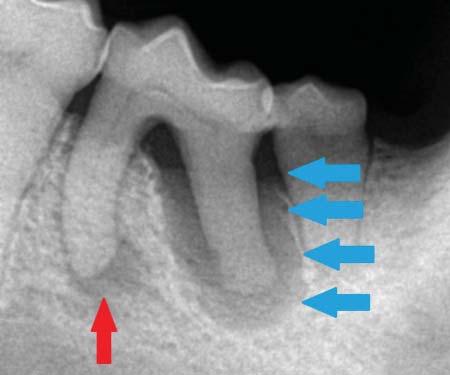
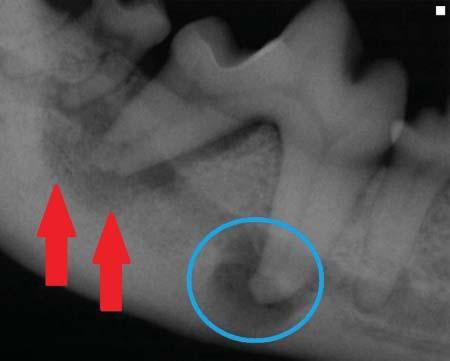

Figure1.28 ClassIIperio-endolesionontherightmandibularfirstmolar(409)ofadog.Theperiodontal losshasextendedallthewaytotheapexofthedistalroot(redarrows),allowingtheoralbacteriaaccessto theendodonticsystemviathepreviousentrypointforthebloodandnervoussupply.Thishasresultedin thedeathofthetoothandendodonticinfectionwhichspreadthroughthecommonpulpchamberand createdaperiapicallucencyonthemesialroot(bluecircle).Thereisonlyasmallamountofboneapicalto themesialroot,increasingthechancesofapathologicfractureduringextraction.Extremecaremustbe takenduringtheextractionattempt.Finally,notetherootresorptionofthedistalrootaswellasthefact thatthemesialrootofthesecondmolarisalsoaffected.
Themostcommonsiteforperiodontaldiseasetobecomeadvancedenoughwithoutexfoliation andresultinaclassIIperio-endolesionisthedistalrootofthemandibularfirstmolar(Figure1.28). However,itshouldbenotedthattheycanoccurinanymulti-rootedtooth[36,40].
Thisconditionismostcommoninoldersmallandtoybreeddogsforseveralreasons,mostof whicharedetailedabove[40].First,thesepatientshaveshorterrootscomparedtotheirlarger counterparts,allowingperiodontalinfectiontoreachthebloodsupplymorereadily.Second,they tenddevelopperiodontaldiseaseearlier.Finally,theytendtobelongerliving,allowingmoretime forbonelosstooccur.
BreedPredispositionstoDentalandOralDiseaseinDogs
ThetypicaltreatmentforclassIIperio-endolesionsisextraction,especiallyforsmaller/ non-strategicteeth.However,whenonerootofamulti-rootedtoothissignificantlydiseasedand theotherishealthy,removalofthatdiseasedrootwhilemaintainingthehealthy/healthierroot/s viaendodontictherapymaybedesirable[42,43].
Themostcommonindicationforrootresectioninveterinarydentistryisthemandibularfirst molarofsmallandtoybreeddogs[60].Thereisoftensignificantdiseaseassociatedwiththedistal root,whilethemesialrootisspared(Figure1.29).Thereareseveraladvantagestorootresection inthispresentation[61].First,muchofthecrownismaintainedformastication.Second,because thedistalrootisoftensignificantlydiseased,itsextractionisrelativelyatraumaticandistherefore lessinvasivethanextractingthemesialroot.Similarly,anotheradvantageoftoothresectionvs. fullextractionofthemandibularfirstmolaristhedecreasedriskofiatrogenicfracture[40].With minimalboneapicaltotherootsinthisareawhichhasbeenfurtherweakenedbytheperiodontally inducedendodonticdisease,theincreasedforceneededtoextracttheperiodontallyhealthymesial rootcouldresultinapathologicfracture(seebelow).
1.1.9PathologicFracture
Oneofthemostsignificantlocalconsequencesofperiodontaldiseaseisapathologicjawfracture[18,40,44,62].Thesefracturestypicallyoccurinthemandible,duetochronicperiodontallosswhichweakenstheboneinaffectedareas[36,63–65](Figure1.30).Neoplasiaandcysts (seeimpactedteethbelow)areapossiblebutexceedinglyrarecauseofthesefracturesaswell (Figure1.31).Thesefracturescanoccurinanyareaofthemandible,butareespeciallycommon nearthecaninesandfirstmolars[40].Thisconditionissignificantlymorecommoninsmallbreed dogs[66],owingmostlytothefactthattheirteeth(especiallythemandibularfirstmolar)arelarger inproportiontotheirmandibleincomparisontolargebreeddogs[67](Figure1.32).Therefore, smallbreeddogshaveaveryminimalamountofboneapicaltothemandibularfirstmolarroots (especiallythemesial),puttingthisareaathighriskoffracturewhenapicalbonelossoccurs[67].

Pathologicjawfracturestypicallyoccurasaresultofmildtraumasuchasfallingoffthecouch anddogfights,howeversomedogshavesufferedfractureswhilesimplyeating[40].Furthermore, theyoftenhappenduringdentalextractionprocedures(seebelow)[40].Thisistypicallyconsidered adiseaseofolderpatients,butthisauthorhastreatedseveralcasesindogslessthanthreeyears ofage.
Pathologicfracturesalwayscarryaguardedprognosisforseveralreasons[40,47,68].Healingis impairedbythelackofremainingboneaswellasthedecreasedoxygentensioninthefracturesite, andrigidlyfixatingthecaudalmandibleisexceedinglychallenging[36,54].Therearenumerous optionsforfixation,buttheuseofwires,pinsorplatesisoftenrequired[40,64].Thisisbecause thereareoftennoteethcaudaltothefractureforapplicationofinterdentalwiresoranacrylic splint.Regardlessofthemethodoffixation,theperiodontallydiseasedroot(s)mustbeextracted forhealingtooccur[36,47,68](Figure1.33).
Awarenessofthepotentialofpathologicfracturescanaidtheveterinarianduringextractionsin at-riskpatients[40].Ifonerootofanaffectedmulti-rootedtoothisperiodontallyhealthy,thereisan evengreaterchanceofmandibularfractureduetotheincreasedforceneededtoextractthehealthy root[36,43](seeFigures1.28and1.29).Analternateformoftreatmentforthesecasesistosection thetooth,extracttheperiodontallydiseasedroot,andperformrootcanaltherapyonthehealthy root[42,43,69,70](seeFigure1.29).Incaseswhereseverealveolarbonelossisnoted(especially ifthemandibularcanineorfirstmolarisaffected),itisrecommendedtoinformtheownersof



Figure1.29 Asaferoptionfortreatingseverelyperiodontallydiseasedmandibularfirstmolar.
(a)Pre-operativedentalradiographsrevealingextremeweakeningofthemandibularboneintheapical areaoftherightmandibularfirstmolar(409)inadog.Theperiodontallosshasextendedallthewaytothe apexofthedistalroot(redarrows),allowingtheoralbacteriaaccesstotheendodonticsystemviathe previousentrypointforthebloodandnervoussupply.Thishasnotonlyresultedinnoattachmentforthe root,butalsointhedeathofthetoothandendodonticinfectionwhichspreadthroughthecommonpulp chamberandcreatedaperiapicallucencyonthemesialroot(bluecircle).Theboneattheapexofthe mesialrootisalmostnon-existent,andthereisonlyafibrousunionintheareajustdistaltothedistalroot (yellowarrow).Thesetwofactorsgreatlyincreasethechancesofafractureduringanextractionattempt.
(b)Post-operativedentalradiographofthepatientin(a).Thedistalrootwassectionedandeasilyextracted. Themesialrootwastreatedwitharootcanaltoavoidplacingpressureontheweakenedbone.Notethat thefourthpremolarwasalsonon-vitalandtreatedwithrootcanaltherapyaswell.(c)6-monthrecheck dentalradiographsofthepatientin(a&b).Thereissignificantnewboneformationintheareaofthe extraction,aswellasalmostcompleteresolutionoftheperiapicallucency(redarrow).Thisconfirmeda successfulendodontictherapyandresolutionoftheweakenedmandible.




Figure1.30 Intraoraldentalradiographof theleftmandibleofa1.5kgYorkshireTerrier withadvancedperiodontaldisease.Thishas createdacompletelackofattachmenton themesialrootofthefirstmolar(309) (yellowarrows).Thishasresultedina minimalamountofbone(0.3mm)inthe area(redarrow),whichsignificantly predisposestheareatofracture(withmild traumaorduringanextractionattempt). Notethecompletelackofperiodontal attachmentofthethirdpremolar(307) (whitearrow),resultingina“floatingtooth.”
Figure1.31 Pathologicmandibular fractureinaBoxersecondarytoa dentigerouscyst.Thepatienthadan impactedfirstpremolar(whitearrow),which hasresultedinalargerdentigerouscyst (yellowarrows).Thelargecysteventually weakenedthejawsufficientlytocauseitto fracture(redarrows)duringmildtrauma (tuggingonarope).

Figure1.32 Comparisonoftherootanatomyofsmallvs.largebreeddogs.(a)Normalintra-oraldental radiographoftherightmandibularfirstmolar(409)ina1.4kgMaltipoo.Themesialrootextendstowithin 0.5mmoftheventralcortexofthemandible(yellowarrow).Inaddition,theroothasasignificantdistal curve(redarrow).Bothofthesefindingsgreatlyincreasethechancesoffractureshouldextractionbecome necessary.(b)Intraoraldentalradiographofthemandibularrightfirstmolar(409)ofa37kgGerman ShepherdDog.Thereissignificant(2.5cm)ofboneapicaltothetoothrootsofthefirstmolar(bluearrows). Thus,therewouldbeplentyofstrengthleftinthejaweveniftheperiodontalbonewascompletelylost. Mandibularfractureshouldnotoccurinthesepatients.Notetheincidentalfindingoftoothresorptionon therootsofthefourthpremolar(408)(yellowarrow).Thereisnoclinicalevidenceoftheresorption,and thereforeradiographicmonitoringissufficient.
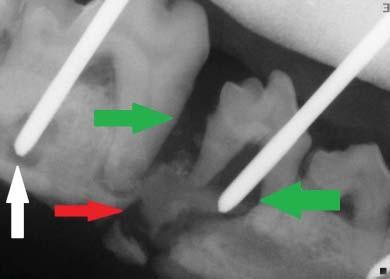

Figure1.33 Impropertreatmentofpathologicmandibularfracturesresultedinnon-unionandcontinued infectionvs,propertherapyresultinginahealedfracturesite.(a)Intraoraldentalradiographoftheright mandibleofaDachshundwithanon-healingfracture.Thepatienthasbeenrepeatedly(threetimes) treatedwithanexternalfixatorwithoutthebenefitofintraoraldentalradiographs.Thishasresultedin failureoffixationandnon-union(redarrow).Thedentalradiographsrevealedthattherewasadvanced periodontaldiseaseaffectingthefourthpremolarandfirstmolar(408&409),whichwasnotallowingthe bonetoheal.Finally,therewasdamagetoandinfectionoftheteethbypoorlyplacedpins(whitearrows). Removaloftheapplianceandextractionoftheinfectedteethallowedhealingwithminimallyinvasive interfragmentarywires.(b)Intraoraldentalradiographofapathologicfractureofthemandibularleftofa MiniaturePoodle.Theinfectedthirdandfourthpremolars(307and308)wereextracted,andthenthe fracturereducedandfixedwithasinglecircum-mandibularwire.
thepossibilityofaniatrogenicjawfracturepriortoattemptingextractionoftheoffendingtooth [36,40].Referraltoaveterinarydentistforextractionoftheseteethisstronglyencouraged.
1.1.10OcularDamage

Anotherlocalramificationofadvancedperiodontaldiseaseresultsfrominflammationcloseto theorbitwhichcanpotentiallyleadtoocularinflammation,nasolacrimaldisease,retrobulbar abscesses,andpotentiallyblindness[36,40,45,46](Figure1.34).Theproximityofthetoothroot
Figure1.34 Chronicrighteyeinfectionina 5kgmixedbreedbrachycephalicdog.


Figure1.35 Intraoraldentalradiographof therightmaxillaryfirstmolar(109)inthe patientinFigure1.34.Theglobeisoutlined bythegreenline.Thetoothhasalarge periapicallucencyaffectingthepalatalroot, whichresidesveryclosetotheglobe.The chronicinfectionalmostresultedin enucleation,butwasresolvedwith extractionofthetooth.
apicesofthemaxillarymolarsandfourthpremolarstotheorbitplacesthedelicateoptictissuesin jeopardy[46,71],(Figure1.35).
1.1.11SystemicConsequencesofPeriodontalDisease[72]
Whilenocurrentresearchsupportsthatsystemiceffectsofperiodontaldiseaseareincreasedin smallandtoybreeddogs,therearetwofactsthatmayleadtointensificationofsystemiceffects inthesebreeds.First,asdiscussed,theytypicallysufferfromamoresignificantlevelofdisease. Secondly,theirlargerproportionalperiodontalsurfaceareaprovidesincreasedsystemicspread comparedtobodysizeoflargerbreedsorhumanbeings.

Systemicramificationsofperiodontaldiseasehavebeenextensivelystudiedoverthelastfew decades,whichhasresultedinaplethoraofpublicationsinpeer-reviewedjournals.Whilemostof theresearchhasbeenperformedonhumans,thereisanincreasingnumberofveterinarypapers. Inaddition,whilethereiscurrentlynoproofofcauseandeffect,thereismountingevidenceofthe negativeconsequencesofperiodontaldiseaseonthesystemichealthofhumanandanimalpatients.
Thepathogenesisofthesystemicaffectsisbasedontheinflammatorycascade.Inresponseto thebacterialinfection,thepatientcreatesinflammationwithinthegingival/periodontaltissuesto allowthebody’sdefensestoattackthesubgingivalbacteria.However,thisinflammationnotonly furtherinflamestheperiodontaltissues,italsoallowsbacteriatogainreadyaccesstothebloodstreamandthustotheentirebody[73–75].Thisisduetoenlargedspacebetweenthecrevicular epithelialcellsandincreasedvascularpermeability.
Notonlydothebacteriacrossthegingivalbarrier,butalsotheinflammatorymediatorsthey produce,suchaslipopolysaccharides(LPS).Thebacteriaandtheirnoxiousbyproductscancreate significantdeleteriouseffectsthroughouttheentirebody[76].Inadditiontothebacteriathemselvesandtheirtoxicbyproducts,systemiceffectsarealsodrivenbythepatient’sactivationofits owninflammatorymediatorssuchascytokines(TNF,PGE2,IL-1,and6)[77–79].Theeffectof thesepro-inflammatoriesonthesystemichealthofthepatientisdemonstratedbynumerousstudiesoninflammatorymarkersinperiodontaldiseaseandtheirresponsetotherapyinbothhuman andveterinarypatients[77,80–82].
Periodontaldiseasehasbeenlinkedtonumeroussystemicproblemssuchascardiovascular (Figure1.36),hepatic(Figure1.37),andrenal(Figure1.38)dysfunctionanddiseaseinbothveterinaryandhumanstudies[7,77,80,83–90].Inaddition,humanresearchhasrevealedassociations
Figure1.36 Post-mortempictureof valvularendocarditisinaminiaturePoodle. Thepatientdiedofcongestiveheartfailure andhadsignificantperiodontaldisease. Source:PhotocourtesyofDr.JoaoOrvahlo andwaspreviouslypublishedin“Veterinary DentalApplicationsinEmergencyMedicine andCriticalorCompromisedPatients.”Used withpermissionfromPracticalVeterinary Publishing.

Figure1.37 Post-mortempictureofareasof abscessationontheliverofacaninepatientwith multipleorganfailure.Source:ImagescourtesyofDr. JerzyGaworandwaspreviouslypublishedin “VeterinaryDentalApplicationsinEmergency MedicineandCriticalorCompromisedPatients.” UsedwithpermissionfromPracticalVeterinary Publishing.


withcardiacdisease,strokes,arthritis,diabetes,pulmonarydisease,adversepregnancyaffects, andanemiaofchronicdisease[75,91–104].
Recentstudiesalsoproposealinkbetweenperiodontaldiseaseanddistantneoplasiasuchas gastrointestinal,kidney,pancreatic,andhematologicalcancers[105–109].Furtherpapersshow thathumanpatientsaffectedwithperiodontaldiseasearefourtimesmorelikelytohavemultiple (threeormore)systemicissuesthanthosewithgoodperiodontalhealth[110].Astrikingindicator ofthedegreethatperiodontaldiseasenegativelyaffectsoverallhealthisestablishedinmortality studies.Inseveralpeer-reviewedstudies,periodontaldiseasehasbeenshowntobeasignificant predictorofhastenedmortalityinhumans[111–113].OnestudyfromScandinaviareportedthat severeperiodontaldiseaseisactuallyahigherriskfactorforearlydeaththansmoking[114].
1.1.12SystemicBenefitsofPeriodontalTherapy
Itisquitecommonforcaninepetparentswhosedogsdevelopcomorbidities(systemichealth issues)toexpresstheirdesiretoavoidanesthesia.Inaddition,manyveterinariansarereluctant toanesthetizethesepatients.Thesepervasivefearsemanatefromthemythsthatanesthesiacarries
